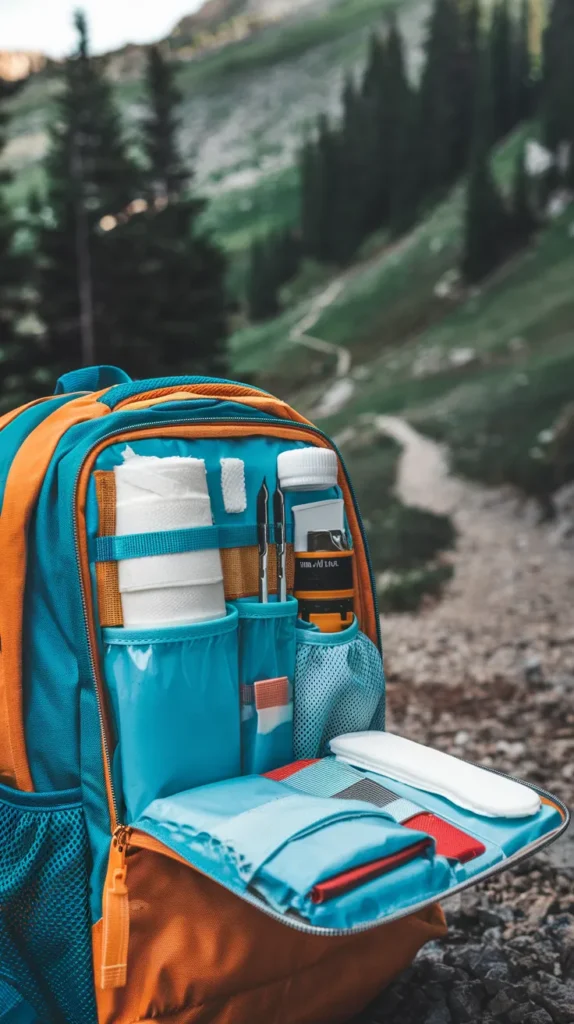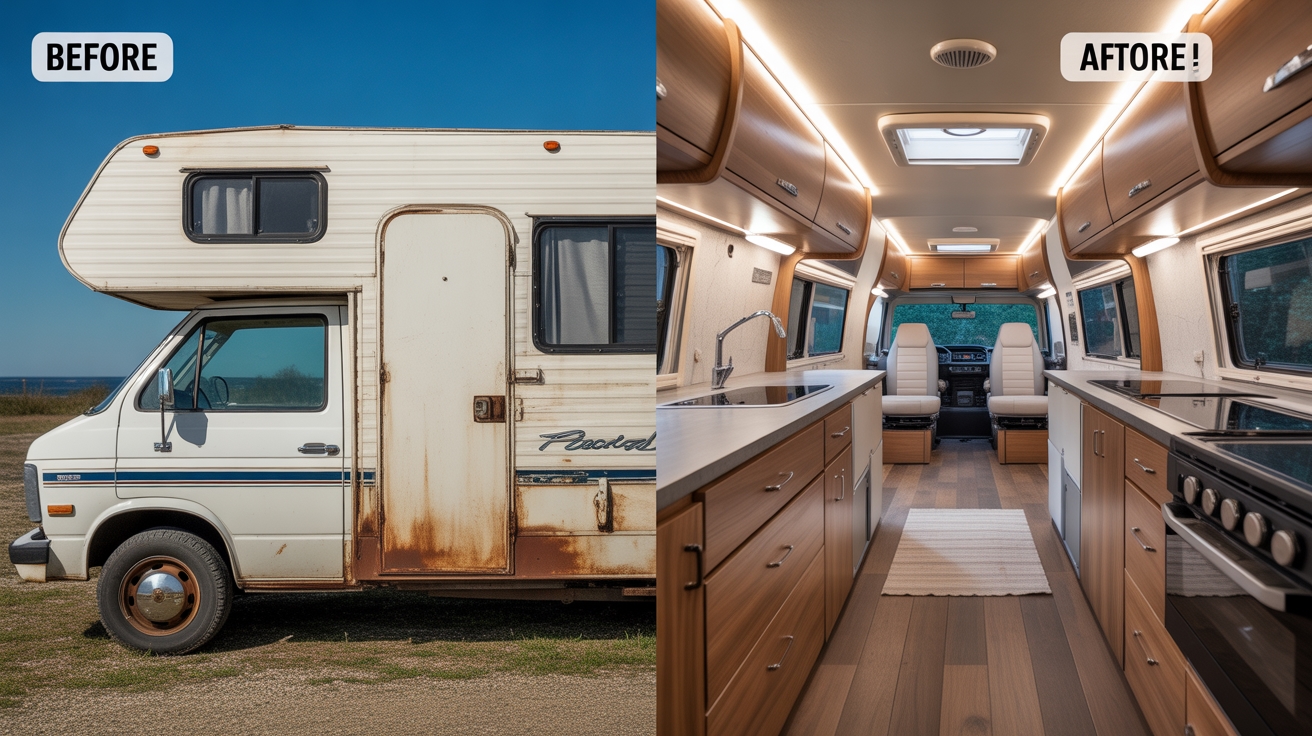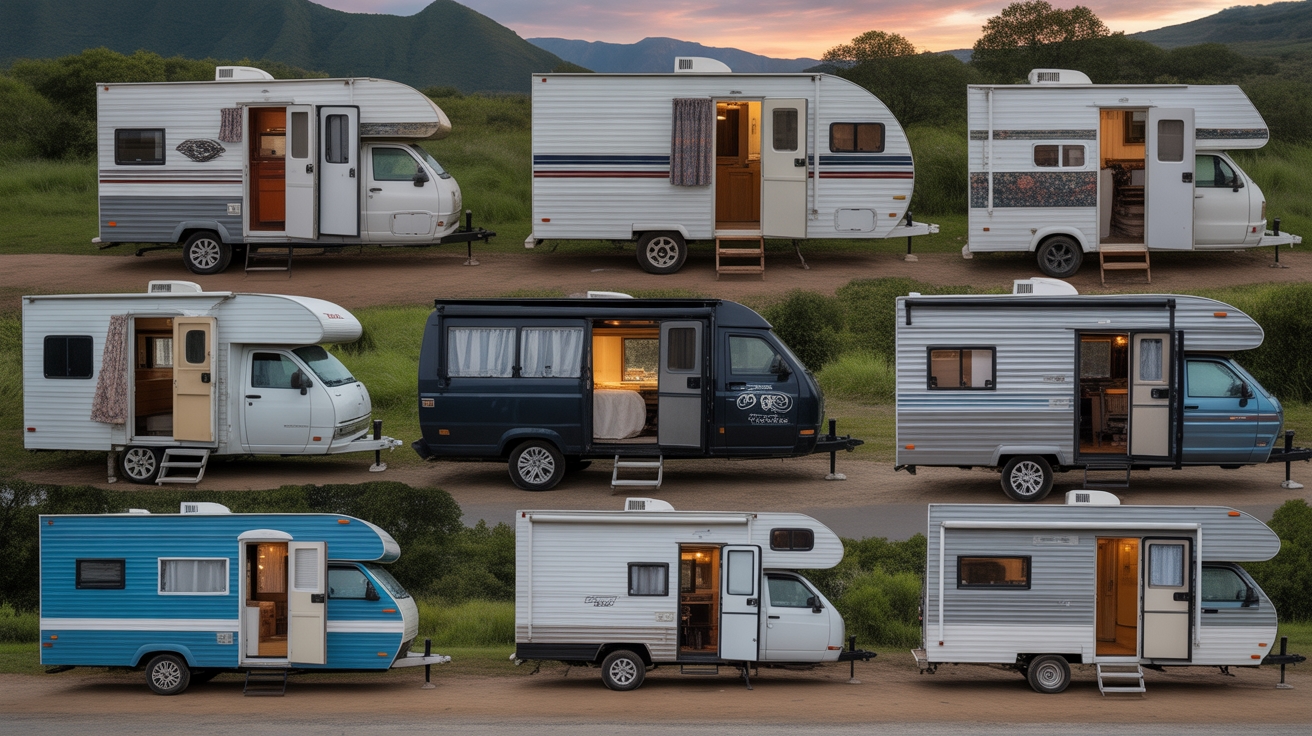Imagine you’re miles into the wilderness when you trip and scrape your knee. A well-prepared first-aid kit can make all the difference in that moment.
Crafting a cute and compact kit for your backpacking adventures isn’t just about aesthetics; it’s about ensuring you’re ready for any minor mishap. So, how do you combine practicality with a touch of personality? Let’s investigate the essentials you need to create your perfect kit.
Assessing Your Needs: Personalizing Your First-Aid Kit
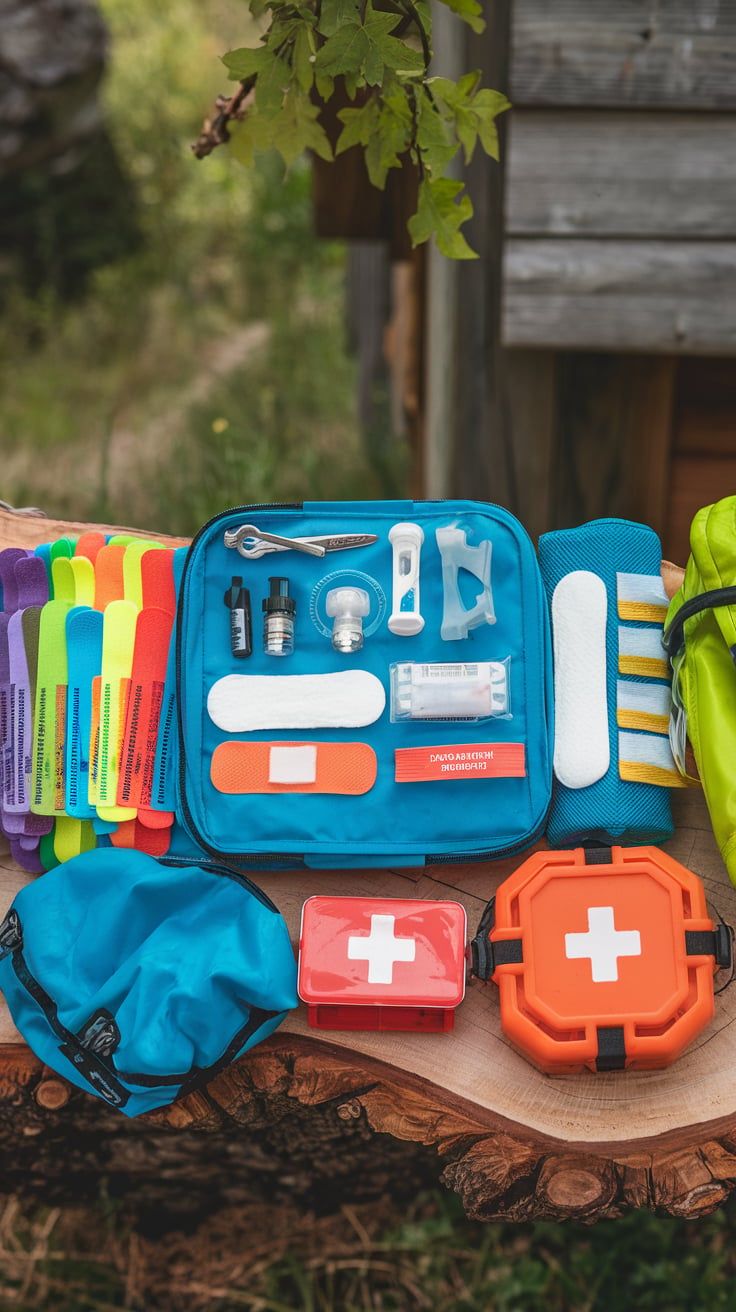
In the domain of backpacking, having a well-prepared first-aid kit can make all the difference in ensuring your safety and comfort on the trail.
Start by evaluating your trip objectives, like duration and group size, to determine the right supplies. If you’re venturing into remote areas, consider how far you’re from medical care.
Think about any pre-existing conditions or allergies within your group, as these will require specific medications or supplies. Keeping a digital record of medical information can further enhance your preparedness. Additionally, it’s crucial to remember that a well-prepared first-aid kit increases your chances of self-rescue when medical assistance is delayed.
Essential Wound Care Supplies for Your Kit
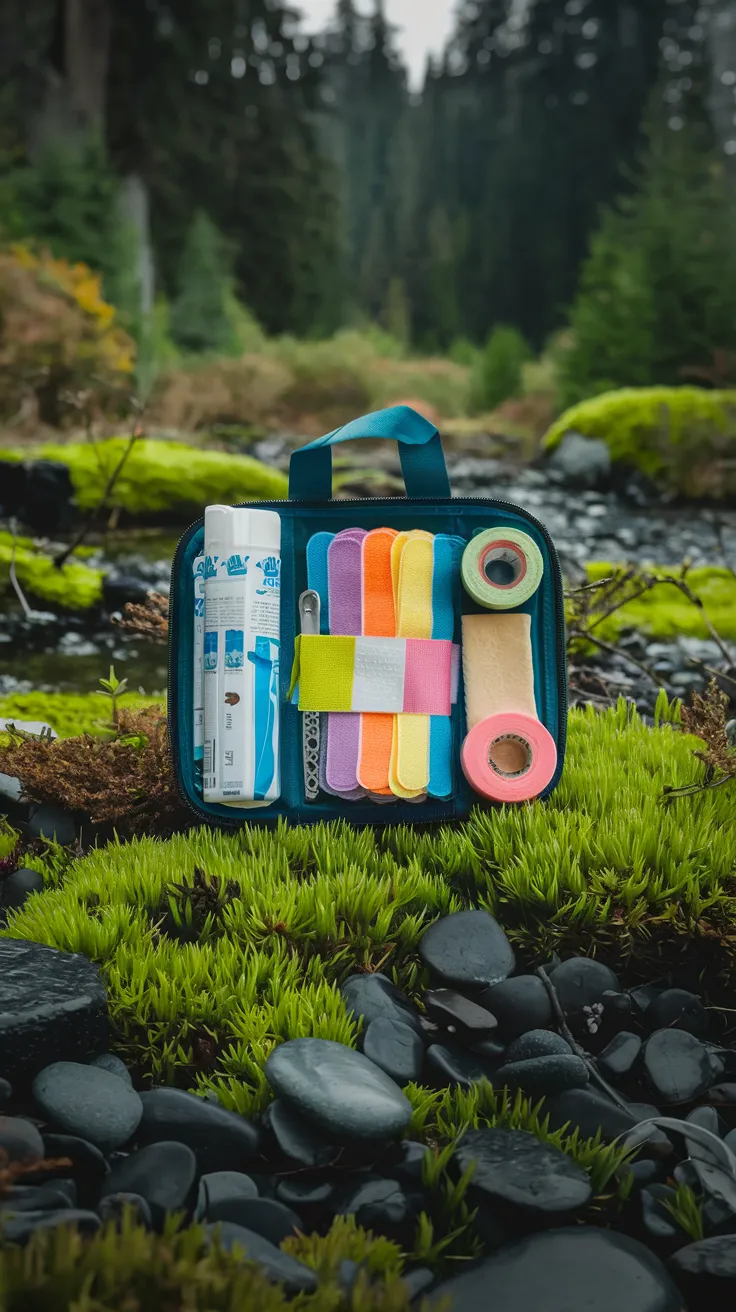
When you’re out on the trail, injuries can happen, and that’s where the right wound care supplies come into play.
Start with sterile dressings and bandages to cover wounds, keeping them clean and promoting healing. Antiseptic wipes or solutions are vital for cleaning any cuts, reducing the risk of infection. Remember that applying direct pressure to a bleeding wound is crucial for stopping the flow of blood until you can properly dress it. Additionally, having tweezers on hand is essential for safely removing splinters or debris from wounds.
Don’t forget adhesive tape to secure those dressings firmly. Tweezers and scissors are essential tools for removing debris or cutting materials without causing further injury.
Pack a topical antibiotic ointment to help prevent infection and keep wounds moist. With these essentials, you’ll be prepared to handle minor injuries and get back to enjoying your adventure.
Must-Have Tools and Equipment for Emergencies
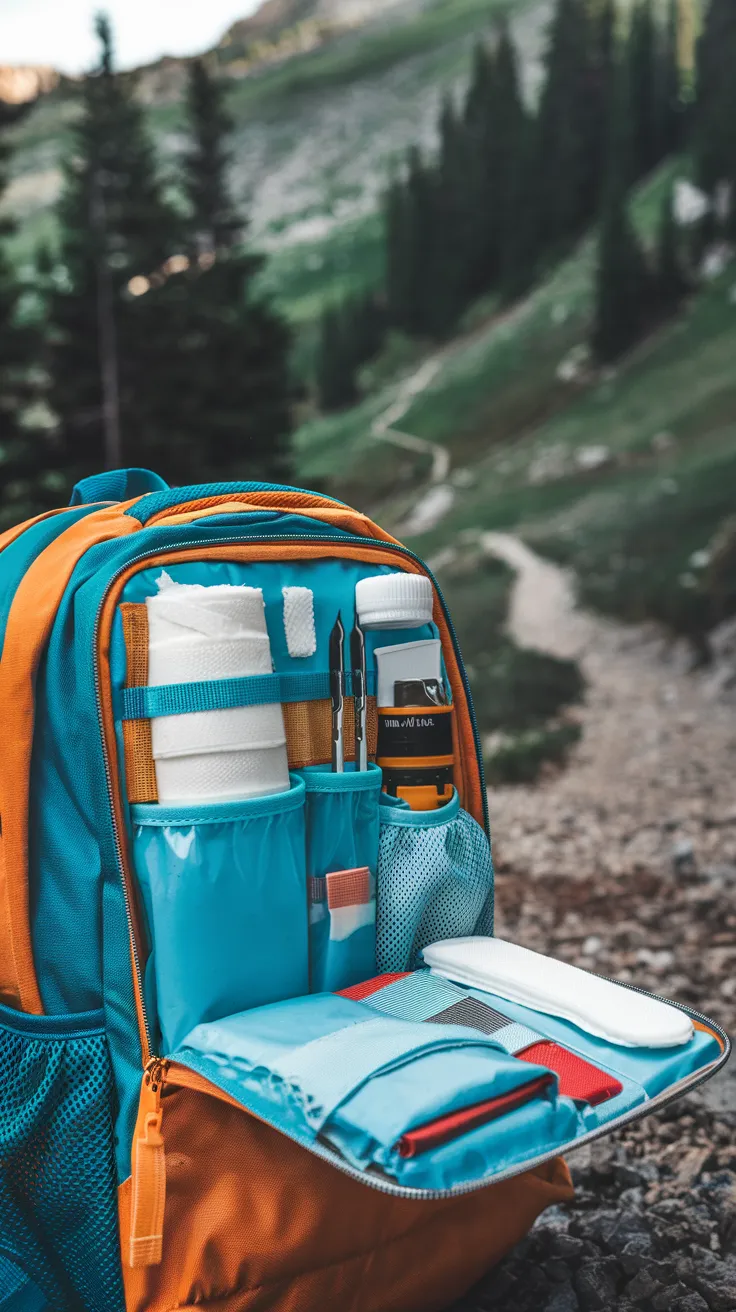
Equipping your backpacking first-aid kit with the right tools and equipment for emergencies can mean the difference between a minor setback and a major crisis. Start with wound management essentials, like gauze pads and adhesive bandages, ensuring you have various sizes for different injuries.
Don’t forget butterfly bandages and medical tape for secure closures. Including upcycled plastic containers can also provide practical and compact storage for your supplies. It’s also important to have a well-tailored first-aid kit that addresses your personal health situations.
Include tools for emergency response, such as tweezers for splinters and scissors or a multi-tool for cutting. Protective gear is crucial, so pack nitrile gloves and an emergency blanket.
Tips for Maintaining and Updating Your First-Aid Kit

Maintaining and updating your first-aid kit isn’t just a good idea; it’s essential for your safety when you’re out in the wilderness. Start by inspecting your kit regularly—check expiration dates and verify all supplies are intact.
Pay special attention to medications and dressings, replacing any that are expired or damaged. Additionally, ensure that your kit includes sterile items by checking for damage to packaging and verifying use-by dates. A well-organized kit ensures quick access during emergencies, making it easier to find what you need when time is of the essence.
Keeping Hygiene in Mind: Personal Care Items
While you might prioritize gear for emergencies, maintaining personal hygiene is equally essential for a successful backpacking trip. Start by packing nitrile medical gloves to prevent cross-contamination during first aid. Hand sanitizer is a must for quick hand cleansing when water isn’t available.
Cotton-tipped swabs are handy for treating small wounds, and a medical waste bag guarantees safe disposal of biohazardous materials. Protect your skin with sunscreen, lip balm, and insect repellent to fend off pesky bugs. Finally, have antiseptic wipes and antibacterial ointment ready for wound care.
Organizing Your Kit for Easy Access
To guarantee you can respond quickly in emergencies, organizing your first-aid kit for easy access is essential.
Start by using a waterproof container to protect your supplies from the elements. Inside, utilize small, resealable bags to categorize items, making it easier to find what you need. Label each bag clearly; this boosts visibility during stressful situations. Additionally, ensure all team members are trained on kit usage to maximize efficiency during an emergency.
Conclusion
Creating your own first-aid kit is like packing a safety blanket for your backpacking adventures; it provides peace of mind and readiness for the unexpected.
By thoughtfully selecting supplies, personalizing your kit, and keeping it organized, you guarantee that you’re well-equipped for any bumps along the trail. Remember, a well-maintained first-aid kit is your trusty companion in the great outdoors, so check it regularly and keep it stocked for every adventure that awaits!
